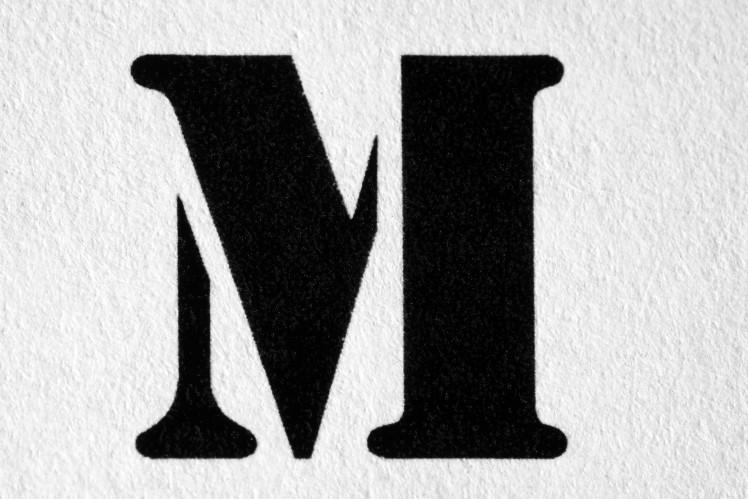The ultimate guide to designing a presentations
-
Alex aka Chief WOWness
CEO and Founder of Press42.com, a site that wants to bring startups to the right bloggers, founder at Inkzee.com, co-founder and curator of Tetuan Valley, an international startup incubator based in Madrid, startup mentor at HackFWD, Springboard, Seedcamp, Wise Guys or Huge Things, partner at Okuri Ventures, Sandbox network Madrid Ambassador, Global Shaper by WEF and Startup Digest Madrid curator.closeAuthor: Alex aka Chief WOWness Name: Alex Barrera
Email: [email protected]
Site: https://plus.google.com/110163117884995501916/posts/p/pub
About: CEO and Founder of Press42.com, a site that wants to bring startups to the right bloggers, founder at Inkzee.com, co-founder and curator of Tetuan Valley, an international startup incubator based in Madrid, startup mentor at HackFWD, Springboard, Seedcamp, Wise Guys or Huge Things, partner at Okuri Ventures, Sandbox network Madrid Ambassador, Global Shaper by WEF and Startup Digest Madrid curator.See Authors Posts (98)+

If I charged $1 for every time someone asks me where have I found the images I use in my presentations I would probably be extremely wealthy by now. So, I’ve decided to show the process I take to design my presentations, from conception to final slides. I hope this helps many to design better presentations for their own companies.
The first thing I have to say is, no, the images are the least important part of the presentation, despite what most think. A presentation starts way before you’ve even thought of adding images. Here are the seven steps I take for presentation design:
Step 1: Conceptualization
Preparing a presentation takes a lot of time
Image: http://500px.com/photo/27121675
The first step before even firing your favorite presentation software (I use Keynote) is to think about an interesting topic you want to talk about. This has to be a topic that you know inside out. This is the point where most presentations fail miserably. If the presenter designs a slide deck on a topic they don’t know they’ll start cramping plenty of text in each slide to make sure they don’t forget about it during delivery. Don’t. Just don’t do this. If you’re not comfortable with your topic, do your research.
Yes, I said research. Read papers, analyze what’s out there. Read books on the topics. Became familiar with every part of the topic. Research real examples and comments and critics about what people are saying about this topic. Actually, that part is essential. If you don’t know the subject, you won’t know its audience either. That’s critical for the presentation. So, do your homework and read about what people are saying about the subject. Do they agree? Are they skeptic about it? If so, why is that? Have they had previous experiences with the topic? The more you can dig of previous experiences the better.
It takes time. Most people think presentations are something you just do in a couple of hours hacking some slides and copy pasting from a document. You can indeed do this, but most of you probably know what the end result tends to be. No, preparing a presentation takes a lot of time. If you don’t know the subject it can take a minimum of one week to prepare something half decent.
So be ready to do some homework and get up to speed with the topic. I would advise to do the research even if you do know the subject. You’ll find some fascinating things that you should know that will come in handy. The output of this process is a document with links, text fragments, photos and comments on the topic in question. It’s like a clipping document with all the information that you’ve uncovered as relevant.
Find your angle
Now, once we have a clear idea of the topic, you need to find the best angle. The angle will be intimately related to you knowledge of you audience. For example, in my case, I deal a lot with start-ups, so I know what kind of things they secretly hate, so I’ll always try to frame my talks around those sore points that everyone know are true, that piss everyone but that no one wants to talk about. I’ll do the opposite, I’ll wrap the concepts I want to explain around those sore points so as to create a clear contraposition of concepts. Other times I’ll walk through what’s happening right now in their own companies and bridge the gap with my slides. As you see, the angle depends on the audience and the better the angle you take, the more empathy you’ll generate.
Step 2: Story design
Image: http://500px.com/photo/34948520
The inciting incident
The angle only gives you a broad idea of where you want to walk through. Now it’s time to bring the storyline on board. We need to design what is call the story arc. At this point I normally fire a Google Document and I start a process I call brain dump. I’ll first reread the clipping document to gather ideas, plus the ones I already had in my head and start the process of dumping all the points I want to deliver. This process isn’t random and it follows a predefined structure. I normally start with a problem or issue my audience is having with the subject. I’ll take the one that pains them the most and use it as the starting point, the spark, the inciting incident of my storyline. The bigger and more painful, the better it will work, as the more conflict it will display.
Once you have a starting point, then it’s easy to start adding pieces to the story that relate to the problem. The next part of the process is to develop the initial problem. Normally a big issue has several collateral problems related to it. I’ll try to map such problems and I would start writing a schematic of the presentation:
- Front slide
- Index [1]
- Me [2]
- Problem
- Problem from angle 1
- Problem from angle 2
- …
- Problem from angle x
[1] Sometimes, depending on the formality of the setting and the intended usage of the slides I would add a broad index to the slides. I rarely do, but it’s worth considering, especially if your slides will be read and not for a live performance. Just a side note, I don’t conceive slides as a document, but as a graphic support to convey a message. In rare occasions I do design slides to be read, but I never use a presentation deck and try to make it dual in nature. Each purpose requires a slightly different approach and design method. Mixing them is a receipt for disaster. And yes, it takes more time this way, which shows you why most people are lazy and will mix the designs and screw both.
[2] If I’m granted more than 15 minutes for my delivery, I’ll normally add a brief introduction of who am I. This is specially important if you want to establish some credibility with the audience. If it’s your first time talking about the topic it’s convenient to showcase what path took you there and why they should care about what you say.
Define your solution
Once you’ve established the problem ground, it’s time to propose a solution, this is the part where you deliver the message you intend for your audience. This has to be related to the previous problem of course and in the same fashion, it will be made of different parts you can talk about. The more time you’ve got on stage, the more into detail you can go with each part.
The problem-solution tandem usually sparks multiple questions, either because you haven’t touched a specific area of the problem or because the message of the solution doesn’t seems complete. This is natural and normal, and it’s the starting point for the next iteration of your talk. This new iteration will be connected to the previous one through a concept I call the nexus slide. Each proposed solution will spark a series of comments and questions that are the ones you’ll start addressing on the next slides. I tend to frame the question myself on a specific slide, the same question the audience is formulating in their heads, though creating the nexus slide, something that both resonates with what the audience is thinking and something that allows me to connect the next block of the presentation:
- Problem
- Problem from angle 1
- Problem from angle 2
- …
- Problem from angle x
- Solution
- Part solution 1
- …
- But you will be thinking… this can’t be (Nexus)
- Counter argument 1
- Counter argument 2
- …
- Counter argument x
Finishing the structure
As you see, this can keep going ad infinitum, that is why you need to be conscious of how much time you have on stage. The final block of the story structure should be a conclusion (or an ending and climax in story terms) with a repetition of the global message you want to convey, a call to action if that makes sense, some bibliography (if it proceeds) and a thank you message with your contact information.
- Conclusion
- Repetition of message 1
- Repetition of message 2
- […]
- Repetition of message x
- Call to Action
- Bibliography [1]
- Thank you & contact
[1] Sometimes, if the bibliography is not too long, it’s wise to collapse it with the contact information, as it will be the slides that stays on when you set foot into the QA many of the conferences have.
Step 3: Story refinement
Image: http://500px.com/photo/32200869
Concept bridges
What?! We haven’t finished?!! Nope, we haven’t. This stage is where we generate depth of message, story flow and audience resonance. Despite having a basic structure of connected concepts, or pseudo connected points, we still need to create the glue that stitches them together, what I call the concept bridges.
The trick here is to always maintain a conceptual connection you shouldn’t break. The mind of the audience should flow from concept to concept in a natural way so that the feeling is of flow, not of disconnected random blocks of information. The audience needs to have all the little steps that allows them to walk from concept A to concept B as if they were children, the concept bridges. Here is where technical people fail miserably. We always think people are capable of walking from problem A to problem B or from problem to solution in a seamless way because, of course, the audience is as savvy as we are. Wrong. This is mostly never true. To deliver a truly remarkable presentation you need to build the connection bridges between major concepts, even if you feel like it’s a waste of time and that most people know it. You’ll be surprise how even, for savvy people, this connecting steps are enjoyable.
One of the best ways to see if this part is working is by looking at the audience. If their heads are bobbing, specially the ones from the savvy people, you’ll know you’re striking gold. The reason why they bob is because they’re following it through and they’re replaying their own experiences in their minds, and are agreeing with the explanation of what’s going on.
The question is, how do you this? How do you add this concept bridges slides to our presentation structure? I tend to use little stories to fill the gap. That is, real life examples of such situations. Examples or metaphors people can relate to from their daily life that illustrate the concept you’re trying to convey. These metaphors allow you to bring the audience from one concept to the other in a seamless way, as the example leads the way to the next logical concept. The trick here is to always go one step ahead of the audience. You always need to ask yourself, what will the audience be thinking at that point and deliver the image they might be picturing. Remember though, that we’re trying to create concept bridges, so there has to be a reason to tell that example, not just a wild unconnected story.
Reordering the structure
This process will, most probably, uncover problems with the story structure from the previous step. That is, you’ll start seeing that two concepts are very hard to bridge or that what you’re using as a concept bridge is actually a fully blown concept that deserves to be part of the message. This is the moment where you’ll start shifting the story structure around until it clicks. Sometimes the story clicks immediately, others you need to take a break and retake it when you’re more inspired. The more you work with story arcs the more you’ll feel if it clicks or not. When the arc is connected, the story flows naturally and you can feel it. When it doesn’t flows, you’ll feel that there are breaks or big gaps of unconnected chunks of story.
As they say, this step requires rinse and repeat, it’s not easy the first time. The more time you spend on this step, the better the presentation will be. Use the research you did to weave in examples and metaphors, use the data you’ve collected, it will help you make the story flow.
Step 4: Presentation design

Image: http://500px.com/photo/39616324
Oh gosh, finally, we’re reaching the cosmetic part of the presentation. As you see, probably more than half of the work behind a presentation is done before you even fire up the presentation software. This step is where you define what design language are we going to use for the slides. This is not the images per se, but the style you want you use. That is, decide which fonts will you employ, what backgrounds, or what kind of graphics, photos or illustrations.
Step 5: Graphics execution
Image: http://500px.com/photo/28185631
Here is where we finally start executing on the design vision. Each point of our story structure will be represented by an image (if that’s the style we chose). The idea is to describe with images the concept in question. If the previous steps have been followed, this part tends to be fairly easy because most of the concept bridging slides will most probably be visual in nature, so it’s just a matter of finding the right image to represent the concept. As I said, the more worked out the concept is, the easier it is to find the image. Where do I look for images? I use several resources ranging from Flickr, Google images, 500px or even Facebook. The only trick here is to make sure you find high quality images.
Just as a side note, while many still think the images are the core of the presentation, you could deliver the same message without images, just with illustrations or even without slides. The important part is the story arc, the presentation structure, not the image representation.
Step 6: Testing
Image: http://500px.com/photo/10981395
The testing stage is critical for any presentation. I have to say that I personally don’t do extensive testing beyond my wife, shame on me. But it’s always great to showcase the slides and do a quick rehearsal to see how people react. In my case, I will sit down with my wife and walk her through the presentation. I will try the jokes with her, even though she’s not a super geek, she’s geeky enough. If she laughs, it’s gonna work like a charm with my typical audience. Also, going through the story structure document, while flipping through the final slide deck, helps me to know what am I going to tell on each slide and attach the image I’m using with the concept.
Step 7: Delivery
Image: http://500px.com/photo/25823551
The delivery is an art in and itself, which I won’t go into detail here. I will just say that, in my case, it’s the moment of enjoyment. I don’t rehearse the talk beforehand. I do double check the story document several times, fixing the concepts, but I don’t learn the text by heart. Each delivery of the same talk will be different. I always talk about the 80-20 rule when presenting. 80% of the concept is fixed in my mind. I know it inside out, so I know I won’t forget it, but I always allow a 20% of improvisation when delivering it. I don’t like learning the words by heart, I never liked it at school, and I don’t like it now. Either you’re extremely good or your talk will sound like a robot, plus you’ll panic if someone derails your presentation with an out-of-band question or comment. I like to be flexible and let the audience a degree of interaction that can take the presentation some way or another.
Conclusion
I hope this tips will shed some light on the way I work with presentations and that it helps others deliver better presentations. Always remember that all presentations can be improved. I recently realized I’ve been giving presentations for 10 years now, and I keep learning new tips and tricks, new designs. I recently did a walk through some top presentations on Slideshare to learn from them. Keep walking, keep learning.
Comments are closed.
Videos
Recent Posts
-
The Data Story Show trailer is here— November 11, 2015
-
If you don’t feel comfortable with it, drop it
— October 28, 2015
-
Do you want to change your company’s corporate culture? Learn how now!
— October 13, 2015
-
The malleable nature of stories
— October 13, 2015






















